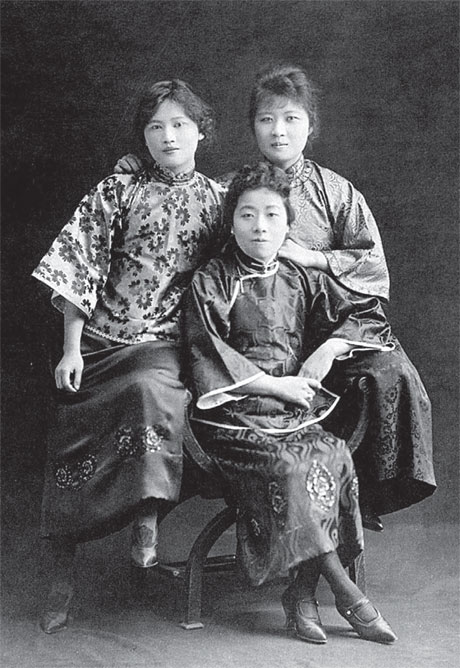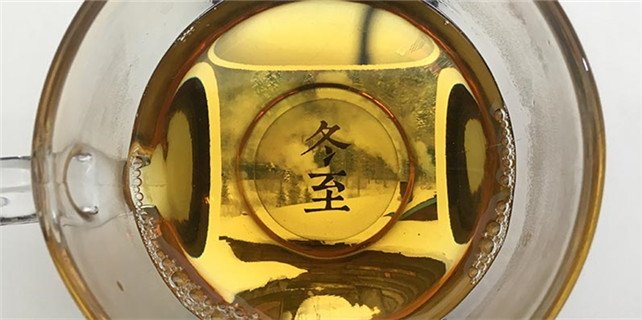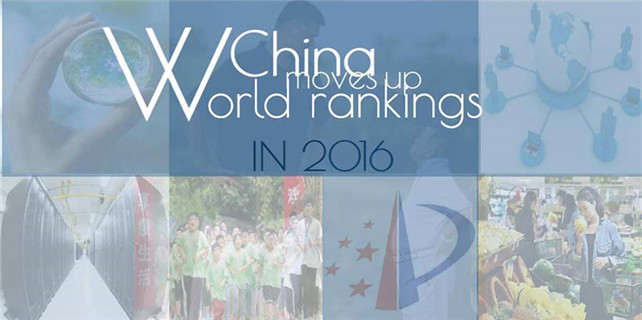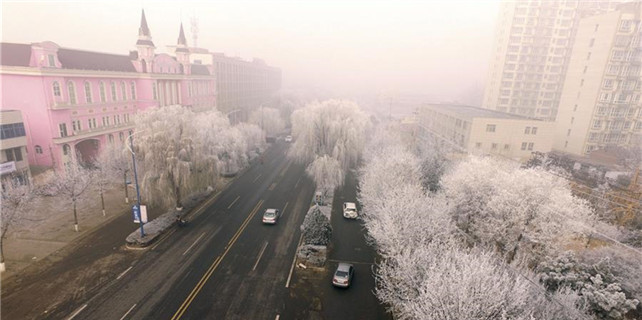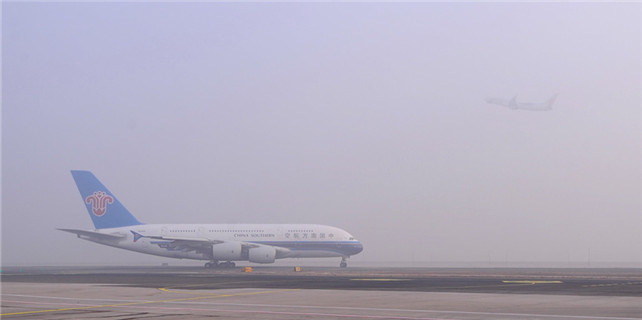Reunited at long last
Exhibition on the Soong sisters highlights their huge role in China's 20th century history, as well as their personal lives
There has never been a trio of sisters more famous in China than the Soongs, and their contributions to the country and the wartime efforts have now been commemorated in an exhibition, The Soong Sisters: Special Memories.
The exhibition, at the Duoyunxuan Art Center in Shanghai, runs until July 31. It is presented by Xinmin Evening News and the municipal management council for the cultural relics of Sun Yat-sen and Soong Ching-ling.
|
|
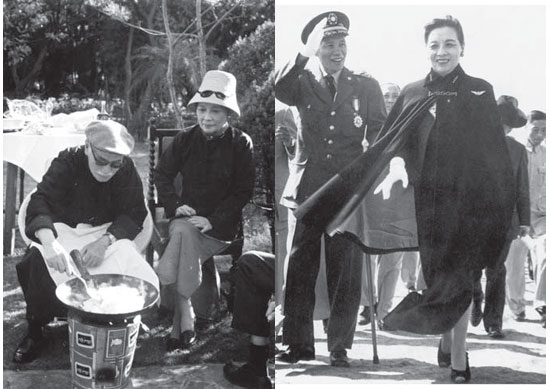
The 300 exhibits comprise original documents, photographs, video recordings, clothing, daily utensils and artwork, and were collected from both sides of the Taiwan Straits.
The three women - Ai-ling (1888-1973), Ching-ling (1893-1981) and Mei-ling (1898-2003) - are well-known for their key roles in China's political scene throughout the 20th century. Two were once the first ladies of China - Ching-ling married Sun Yat-sen (1866-1925), also known as the Father of Modern China while Mei-ling wedded Chiang Kai-shek (1887-1975), the former leader of the Kuomintang government and president of the Republic of China. The eldest sibling, Ai-ling, was married to Kung Hsiang-hsi (1881-1967), the richest man in China in the early 1900s.
While Mei-ling and Ai-ling were ardent supporters of the Kuomintang, Ching-ling was steadfast in her Communist beliefs. Despite their differences in ideology, the three sisters nonetheless joined hands to lend vital support to war relief efforts in the fight against Japanese invaders.
In 1940, when the Japanese occupied the capital city of Nanjing, the three reunited in Chongqing and established the Chinese Industrial Cooperatives. The three sisters provided aid to numerous schools, hospitals, air raid shelters and war-torn communities.
After the fall of the KMT in 1948, Mei-ling and Ai-ling moved to Taiwan with their families, while Ching-ling stayed in the Chinese mainland. The three sisters never again met in person. Ai-ling and Mei-ling later moved to New York, where they spent their last days, while Ching-ling died in Beijing.
"The Soong sisters were born and raised in Shanghai. This is the first time the three of them are reunited since 1949, when they went their separate ways," says Chen Qiwei, chief editor of Xinmin Evening News.
"They were the elites of their time and role models for women in China. The exhibition features the bond between the sisters, as well as their shared patriotic love for the nation. These are people of historical significance, and yet ordinary folks at the same time. It's really the details of family life that reveal the true colors of people."
The Soong sisters were born to American-educated Methodist minister Charles Soong, and all three of them attended Wesleyan College in the US state of Georgia.
Mei-ling left Wesleyan College and later graduated from Wellesley College in Massachusetts. She spoke excellent English, and with a Georgia accent, which helped her to connect with American audiences, according to records from Wellesley College.
In the 1930s, she and her husband initiated the New Life Movement, combining Confucianism with Christianity, and encouraged self-cultivation among the Chinese people.
When World War II broke out, she initiated a welfare project to establish schools for orphans of Chinese soldiers and referred to these children as her "warphans". To better provide for them, she established the Chinese Women's National War Relief Society.
Mei-ling also played an active role in the political scene and was the English translator, secretary and adviser to her husband Chiang.
In 1943, Mei-ling became the first Chinese national and only the second woman to make a public address to both houses of the US Congress, speaking about the Chinese people's determination to fight against the Japanese.
In 1995, she made a rare public appearance when she attended a reception held on Capitol Hill in her honor as part of the celebrations of the 50th anniversary of the end of World War II.
The original crimson dress and silk shawl that Mei-ling wore at this reception are among the rare exhibits, alongside historical photographs of her 1943 lectures in the US.
"It was her last visit to Washington, DC, and again, her appearance and speech reflected the spirit of Chinese people, which won the respect of the American people. Without the victory of the war against the Japanese invaders, there would not be today's China," says Hau Pei-tsun, a politician from Taiwan who was in the KMT army during the war.
Hau adds that he remembers Mei-ling as a "warm and friendly lady, who treated us like her own children" and notes that she would often crack jokes and evoke much laughter at banquets.
Also among the exhibits is the wedding gown that Mei-ling wore in 1927. The white dress features a Chinese qipao-style collar line and a drop-back hem. It is believed that Mei-ling, who was later known as Madame Chiang, had contributed to the design. This bridal look, complete with a white headscarf fastened with a hair clasp, was widely copied at the time, as evidenced by vintage photographs showing a number of celebrities donning similar gowns.
Another significant war-related artifact at the exhibition is the medal that Ching-ling received from the KMT government in recognition for her contributions during the War of Resistance Against Japanese Aggression (1937-45). Ching-ling was also the person who had introduced Western authors and journalists to Mao Zedong, who was based in Yan'an in Shaanxi province.
"Despite their differences, the three sisters each made great contributions to the victory of the war. When you put together the stories of all the three sisters, you'll get a complete picture of the war," says Xiao Guiyu, chairman of the management council of Sun Yat-sen cultural relics in Shanghai.
Xiao adds that the Soong sisters are fine examples of the fusion of Chinese and Western cultures who have made a significant impact on generations after them.
Neither Ching-ling nor Mei-ling had children, while Ai-ling was survived by two sons and two daughters.
In attendance at the exhibition was Chiang Fang Chi-yi, the widow of Chiang Hsiao-yung. The latter's father is Chiang Ching-kuo, the son of Chiang Kai-shek and his first wife, Mao Fumei.
Fang Chi-yi has been the keeper of the diaries of Chiang Kai-shek and Chiang Ching-kuo. Part of the Chiang Kai-shek diaries is now open to the public at the Hoover Institution at Stanford University.
"The three sisters shared the happiness and suffering of the nation through the 20th century. Even though they were separated for decades far across the seas, the emotional connection between them never faded," Fang Chi-yi says.
"The more they aged, the more they missed each other. They asked about one another whenever there were visitors coming from the other side of the Straits. Their spirits in heaven must be consoled now, seeing this exhibition taking place," she adds.
zhangkun@chinadaily.com.cn







